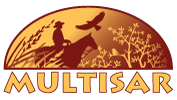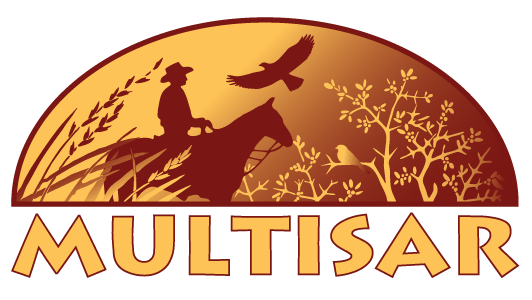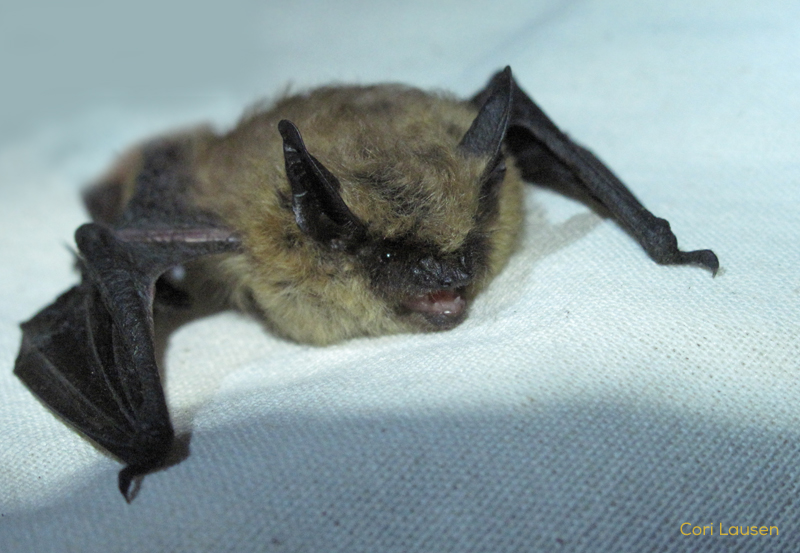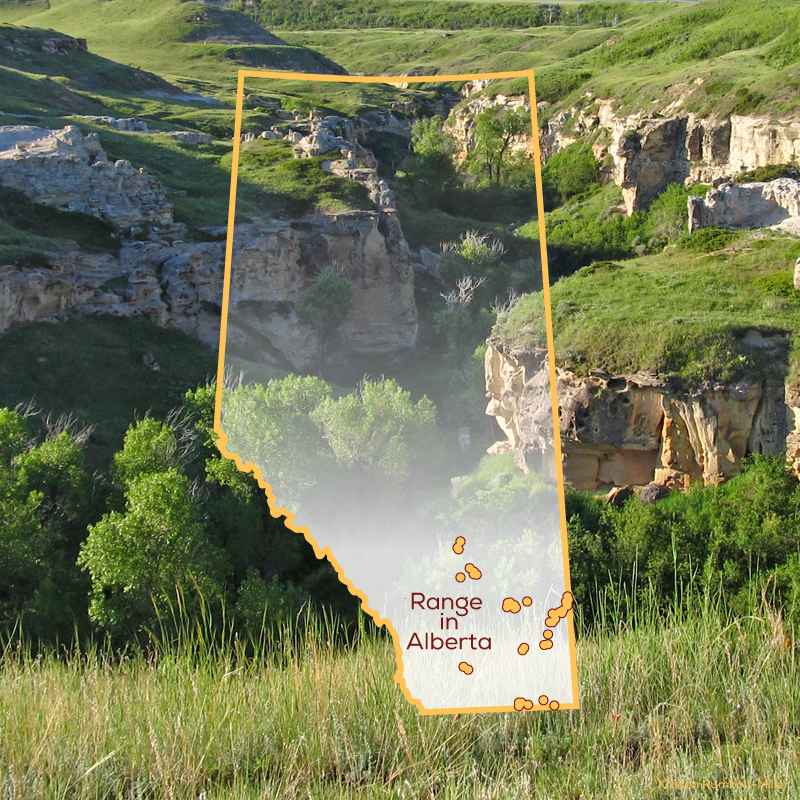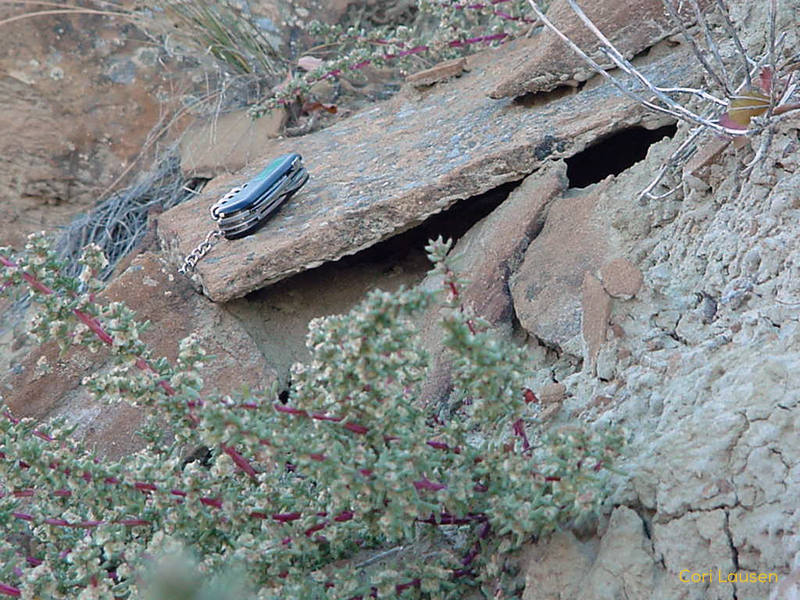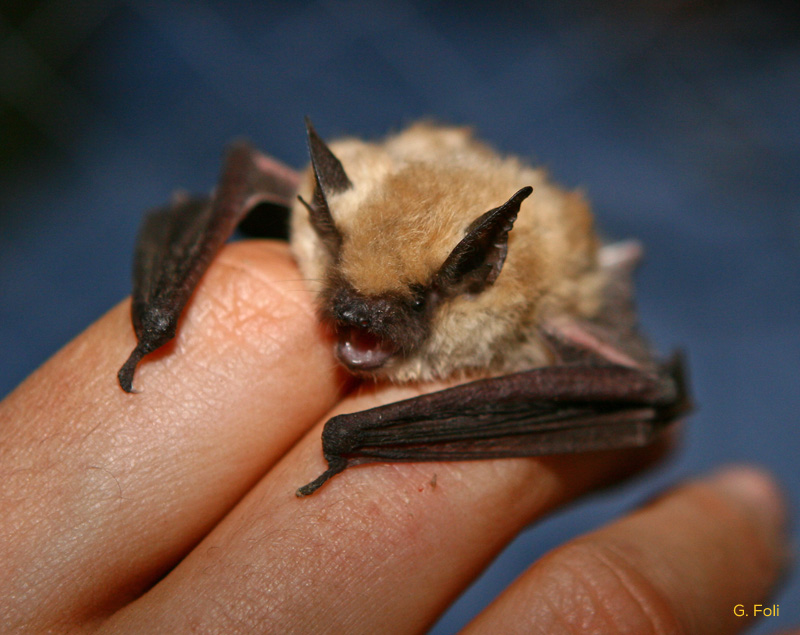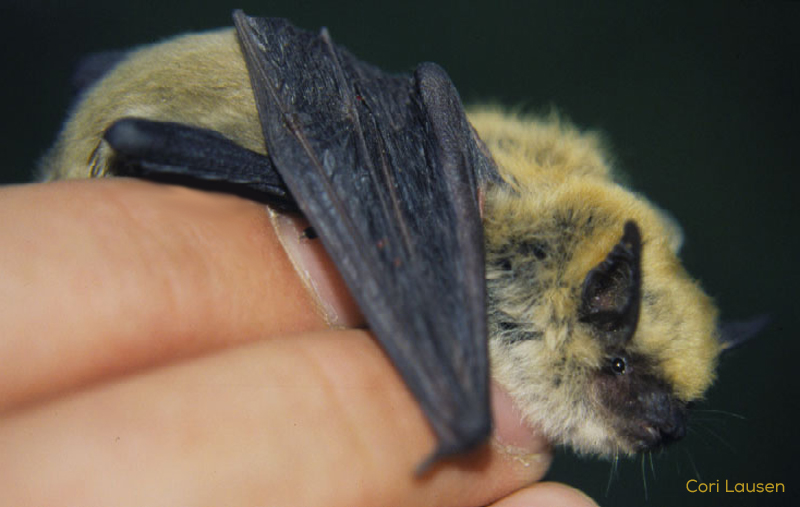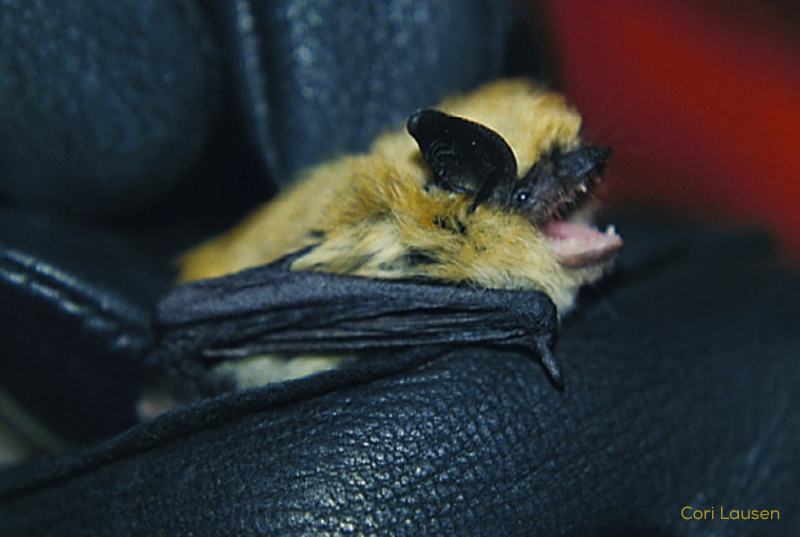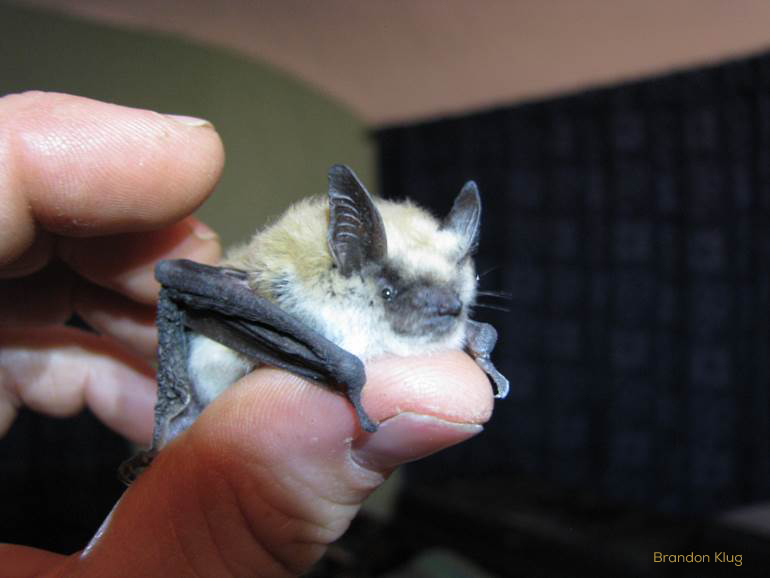Western Small-Footed Bat (Myotis)
Myotis ciliolabrum
Habitat:
Roosts in crevices in cliffs, badlands and clay banks. Forages in riparian cottonwood stands along prairie rivers.
Alberta’s Smallest Bat
The Western Small-footed Bat is Alberta’s smallest bat, at only 85 mm long (about the length of a credit card). As its name suggests, it also has tiny feet. That feature, along with its pale colour, can be used to distinguish it from the Little Brown Bat (although the latter can be pale in southern Alberta).
Reliance on River Valleys
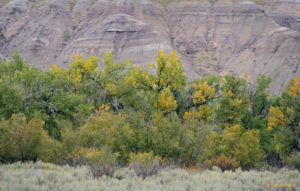
Western small-footed bats live in river valleys where there are cliffs, banks or badlands in which to over-winter.
Western Small-footed Bats are found only along prairie river valleys flanked by badlands, cliffs or banks. They use deep frost-free crevices for hibernating and warm, shallow crevices for raising their young. They feed in and around cottonwood forests found along rivers and therefore only occur where these two habitats are found in close proximity.
All in the Family
During the day, Small-footed Bats tend to roost alone or in small groups of closely related individuals. Reproductive rates are very low, as females do not breed every year and only produce one offspring when they do.
Sticking Close to Home
Western Small-footed Bats don’t venture far from home. They mate and hibernate in the same river system that they were born in and return to their natal areas in the summer to roost close to their relatives.
Population
Western Small-footed bats are locally common, where their two habitat requirements meet in close proximity. However, their low reproductive rate and reliance on very specific habitats makes them vulnerable to population declines.
Current Threats
- Control of natural flooding along prairie rivers can limit or prevent young cottonwoods from establishing.
- Destruction of roosting and foraging habitat by flooding to create reservoirs.
- Heavy grazing of cottonwood forests can affect cottonwood regeneration, damage the health of the forest and negatively impact insect populations that bats feed on.
- Conversion of cottonwood forests to irrigated cropland removes foraging habitat for Western Small-footed Bats.
- Gravel mining can also result in destruction of cottonwood forests.
- Wind turbines cause bat fatalities and placing wind turbines in proximity to a Small-footed Bat population might be detrimental to them.
- A fatal fungal disease, White-nose Syndrome, emerged in North America in 2006. While it has not yet been found in Alberta, it has devastated bat colonies across eastern North America.
Species@Risk Quiz
Test your knowledge about Alberta’s grassland species at risk
Question 1 |
The Western Small-footed Bat is Alberta’s:
Largest bat
| |
Smallest bat | |
Official Provincial Flying Mammal |
Question 2 |
The Small-footed Bat requires these two habitats in close proximity:
Native grasslands and temporary ponds
| |
Cottonwood forests and old farm buildings | |
Cottonwood forests and badlands or cliffs |
Question 3 |
The Small-footed Bat flies through cottonwood forests and feeds on:
Moths, caddisflies, flies, wasps and other small insects
| |
Other bats | |
Cottonwood fluff (seeds) and berries |
Question 4 |
A new and devastating threat to bat populations in North America is:
Red-leg Syndrome
| |
White-nose Syndrome | |
White-noise Phobia |
Public
- If you visit caves in eastern North America, be aware of decontamination protocols and follow disinfection procedures before entering caves in Alberta, to reduce the risk of bringing White-nose Syndrome into Alberta. White-nose Syndrome is an emerging and fatal disease in multiple species of bats.
- Voice your support for river valley and cottonwood forest conservation with your political leaders.
- Educate yourselves and your family about Western Small-footed Bats and their role in the grassland ecosystem.
Landowners
- Foster long-term health of your cottonwood forests by allowing adequate rest from grazing.
- Provide salt, minerals and off-stream water away from river valley trees and shrubs. This will have the added benefit of improving the use of adjacent range.
- If a flood occurs, do not graze your cottonwood forest for two years to allow seedlings to establish and grow strong enough to withstand grazing pressure.
- Avoid gravel extraction in treed areas along river valleys.
- Direct wind energy developments away from river valleys.
- Talk to your children and neighbours about the privilege of having Western Small-footed Bats on your land.
- Contact MULTISAR to discuss management practices that might be beneficial to the Western Small-footed bat on your property or if wildlife browsing appears to be threatening the establishment of seedlings in your cottonwood forest.
What MULTISAR Does
- Conducts surveys and monitors bats as part of its Habitat Conservation Strategies on participating ranches and provides management recommendations to balance the needs of cattle grazing and multiple species of wildlife.
- Assist landholders with fencing projects to control grazing by cattle or to prevent browsing in cottonwood forests.
- Provides information about Western Small-footed Bats and their habitat and recommendations for appropriate management of cottonwood forests.
